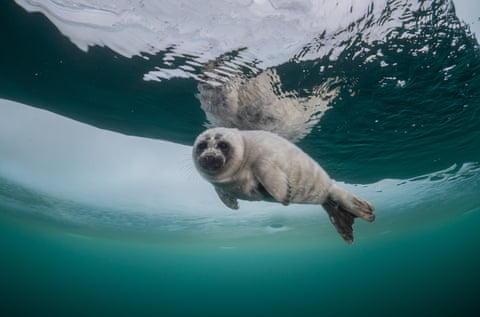Russia’s Lake Baikal has garnered many superlatives: the world’s deepest lake, the largest freshwater lake by volume, and the world’s oldest. It is also one of the clearest bodies of water on the planet and home to many species of plants and animals endemic to the region.
One such species is the Baikal seal, known locally as nerpa. It is one of the smallest pinnipeds in the world and is only found in this lake.
My goal was to photograph the Baikal seal underwater, in its natural environment, which few people have done. I wanted to show the world the pristine beauty of the lake and the creatures that live in it. I had already attempted to take the pictures two years ago, in November, without success; the lake freezes in about mid-January, and it was difficult to find the elusive nerpas in open water.
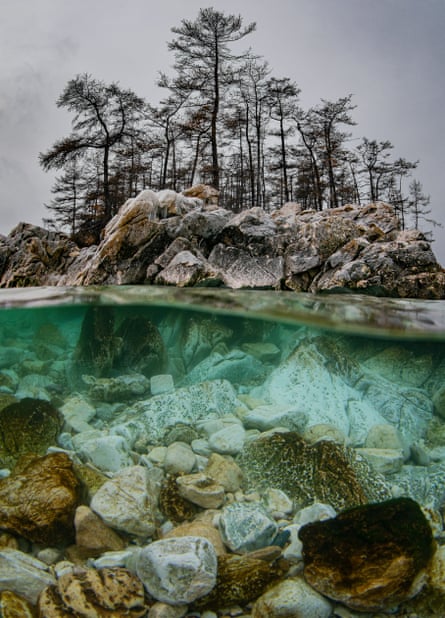
The crystal-clear waters of Lake Baikal
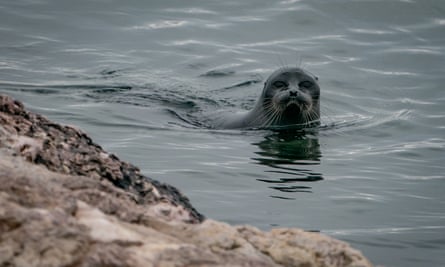
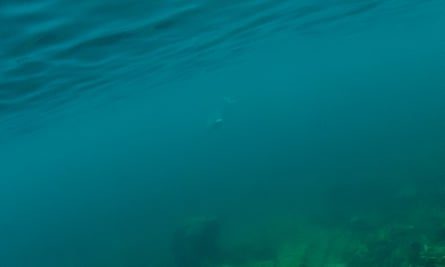
A Baikal seal; and the only underwater photograph from my trip two years ago
But I was determined to try again. So this year I came to Lake Baikal in April, when spring is awakening Siberia, the snow is melting and the sun dazzles the eyes. The only reminder of winter’s tenacious grip is the sheet of ice still covering the lake.
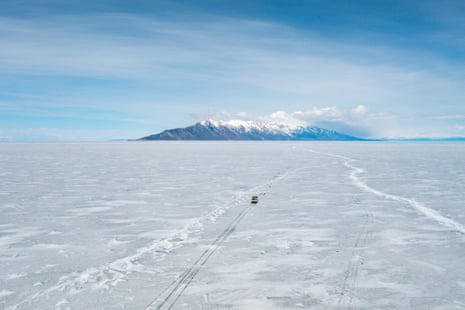
Driving across the enormous frozen expanse of Lake Baikal
Baikal seals are normally very shy, but the young ones are the exception. Nerpa females give birth in March, in snow-covered burrows on the ice. Newborn pups are covered with white fur, are unable to swim and it is impossible to get close without scaring them. But within a few weeks their fur becomes thicker and grey, and the pup is ready to explore the depths of the lake and the magical world below the ice.
Finding a burrow in the vast expanse of the Baikal ice is not easy, so we enlisted the professional help of Pulka, a local dog with years of experience in the job.
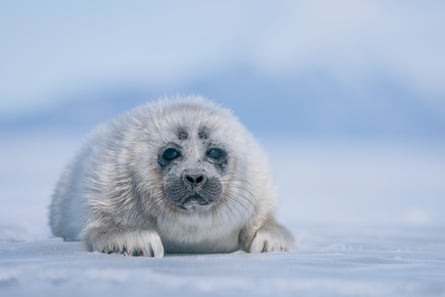
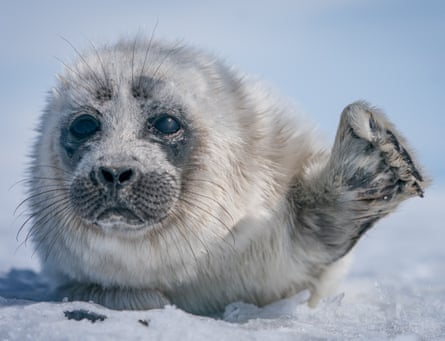
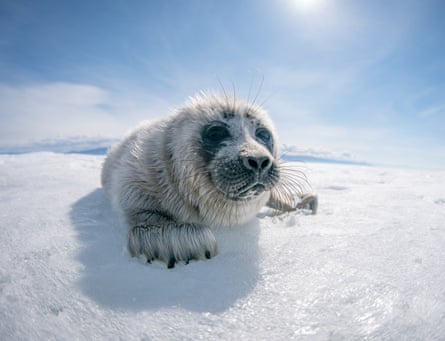
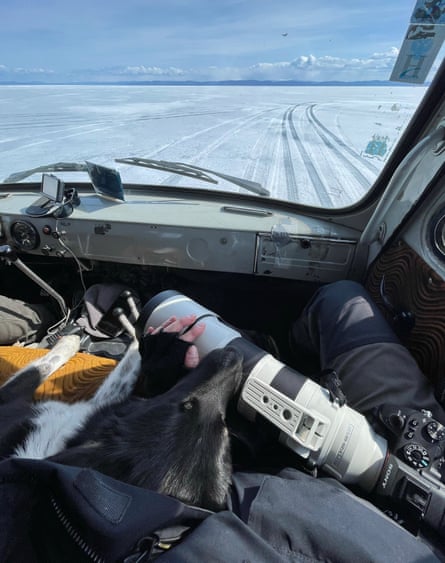
Hours of searching for seals can be exhausting – even for those with years of experience
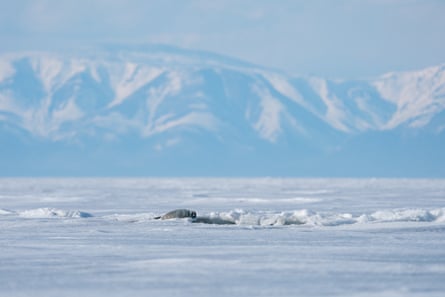

A young nerpa beside its ice hole; Pulka waits by the burrow he has found
The seal’s burrow has an exit to the lake from under the ice, so our strategy was to locate it, dive and then wait for the nerpa.
But looking for Baikal seals under thick ice can be incredibly precarious, and it takes many dives to get lucky. Our first dive was next to a giant crack in the middle of the lake. These cracks form because of temperature changes and can be several kilometres long. They can also change shape and size overnight – an obvious concern for people driving across the lake.
The surface of the ice is visually stunning, but underwater, the cracks look even more phenomenal – huge ice blocks are layered on top of each, others forming caverns and passages. And when you are inside these passages, you are always conscious of the kilometre-deep water below you and the ceiling of thick ice above. The only way back is a small hole in the ice 100 metres away – a precious window to our world.

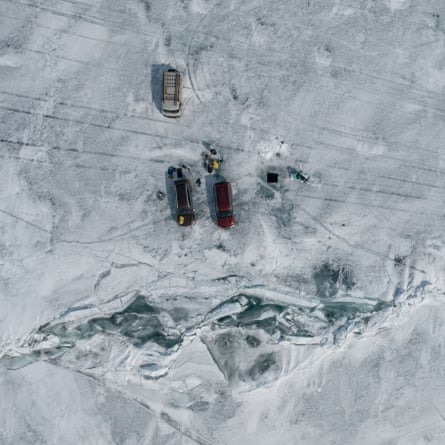

Huge ice formations below the lake’s surface
Divers in Lake Baikal can also experience the “ice cloud” – a massive formation created at the beginning of winter when strong winds move huge floes along the water. Rapidly changing light and colours give the illusion of being under a fairytale sky.

Diving under the ice cloud
After a few fruitless dives, Pulka’s search efforts finally produced results and we reached the precious target. While slowly getting close to the burrow from beneath I detect some movement, and then – a curious nose.
The seal pup was obviously surprised to see a strange clumsy creature loaded with gear. That probably explains why it stayed with me for about 15 minutes – keeping its distance but circling back to get a better look.
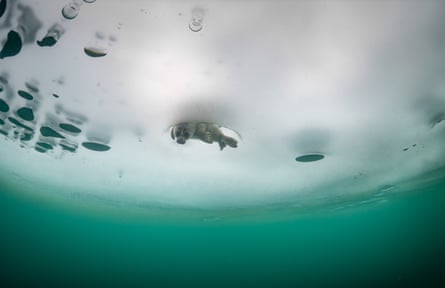
A curious nose appears at the surface of the lake

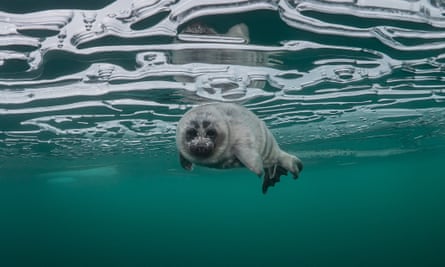
The air bubbles on the ice surface are created by the nerpa’s breathing, probably from this pup’s mother
The mother seal surfaces only once or twice a day, to suckle her pup and to ensure the ice hole has not frozen over.
But the seals know that the ice will melt very quickly in April, and soon they will have the freedom to swim all around the giant lake, which has long been known to local people as the “Glorious Sea”.
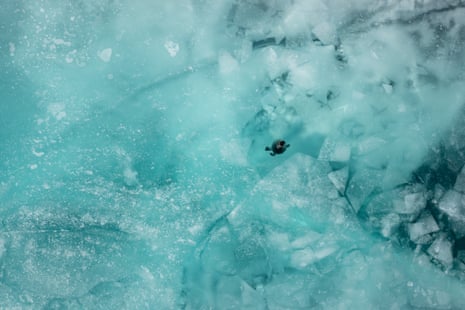
In April the ice starts melting quickly, and the seals will soon have the freedom of the lake
